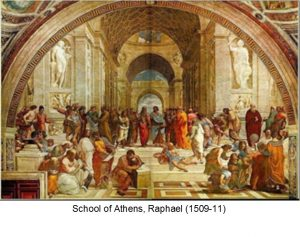The Arts are fundamental to education as they bring a unique joy, success, and authenticity to the learning process. After over 15 years of teaching art in Detroit, I stand firm in my belief: the path I chose was the right one. I find immense joy in what I do, and I’ve observed firsthand how the arts enrich the curriculum and bring happiness to students.
The Role of Arts in STEAM Education
A balanced curriculum enriched with the Arts, embodied in the STEAM (Science, Technology, Engineering, Arts, Math) approach, enhances students’ creative thinking. It encourages them to devise innovative answers to probing questions. The ‘A’ in STEAM promotes imaginative thinking, unshackled by the constraint of finding a single correct answer (STEM to STEAM). In collaboration with technology, the arts can reveal how art and design might fuel innovation (Fournier, 2013). While an art lesson asks students to create and apply skills within certain assessment criteria, it fundamentally encourages them to ask questions and develop their own inquiries. This, in turn, fuels the hope for future innovations (Berger, 2014). Universities are now preparing students for creative careers that are yet to exist. Without the arts, learning becomes compartmentalized, hindering transdisciplinary learning.
Art History: A Lesson in Humanity and Global Diversity
Art history imparts lessons of humanity and global diversity. It enables students to “see” the world – past, present, and future. Art acts as a cultural heritage, handed down to younger generations, allowing them to create their artistic language and contribute to global development (Bamford. 2006). Over time, art has been instrumental in influencing people’s beliefs, actions, and leadership choices. The likes of DaVinci, Picasso, Shakespeare, and Mozart teach not just technique and process, but also content. The Renaissance period, for instance, saw artists studying reality and returning to Greek & Roman classics (Jirousek, 2009).

Arts Enriched Educational Policies
Educational policies integrating arts are prevalent worldwide. Arts integrated programs, combined with robust community partnerships, lead to successful student outcomes (Bamford, 2009). A testament to this is Cornerstone’s partnerships and arts advocacy, evident in our district-wide concerts featuring renowned musicians and visual art field trips, including one to Art prize by Grand Valley State University.
The Joy of Arts in Education
The positive impact of arts in education is evident in a 2010 study of Missouri public schools. Students engaged in the arts recorded fewer disciplinary infractions, higher attendance, increased graduation rates, and improved test scores (Scheuler, 2010). The act of creating or even observing art can relieve stress and trigger endorphins, offering a sense of fulfillment. The arts in education, in essence, connect our hearts, hands, and minds!
